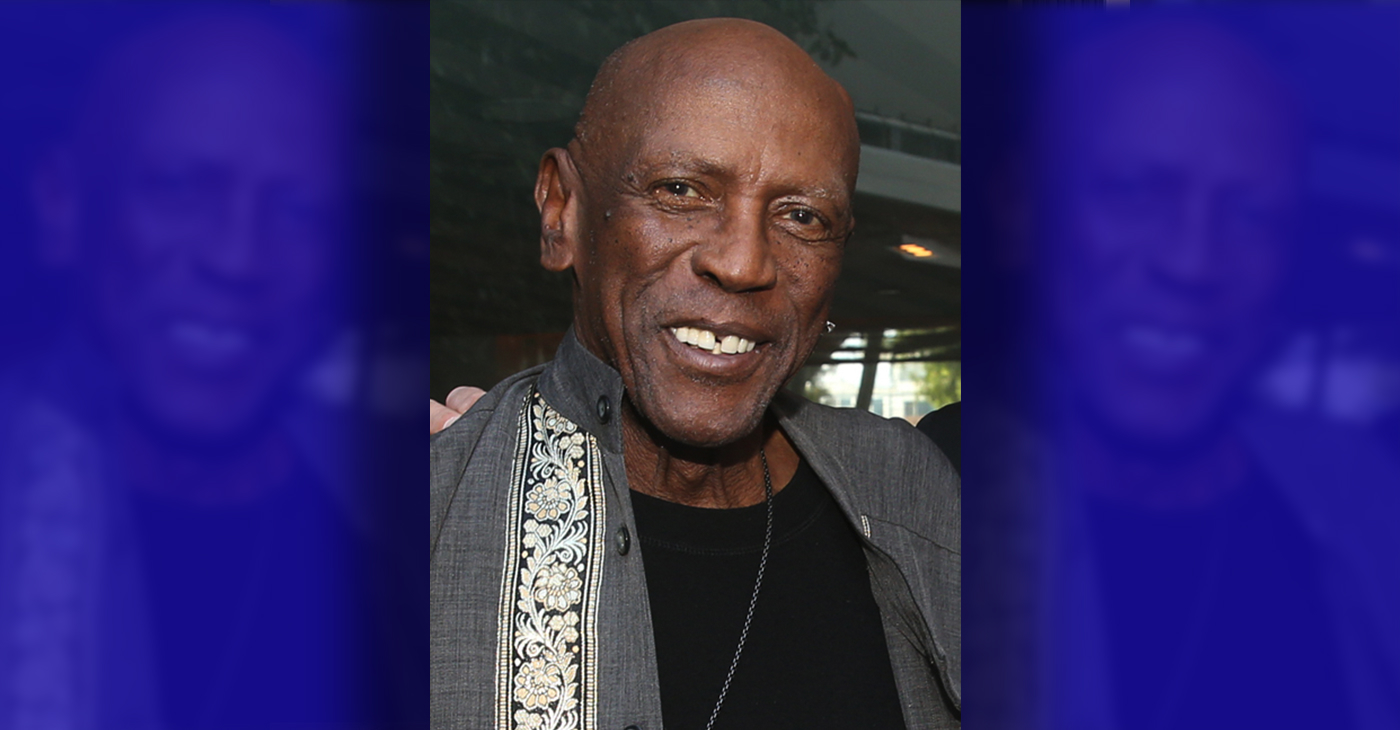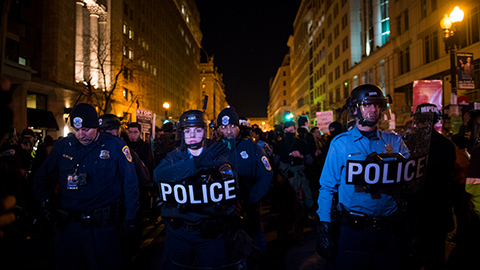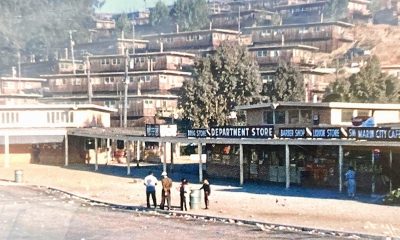#NNPA BlackPress
Brown, Senate Democrats Press Upstart, Lenders for Answers Following Reports of Higher Interest Rates for Students of Minority-Serving Institutions
NNPA NEWSWIRE — The Equal Credit Opportunity Act (ECOA) prohibits discrimination in any aspect of a credit transaction. Under the statute, lenders can be liable if they treat applicants differently based on a prohibited basis, such as race or national origin. In addition, lenders can also be liable if their practices have a disproportionate impact on a protected class.
WASHINGTON — Senator Sherrod Brown (D-OH), Ranking Member of the Senate Committee on Banking, Housing and Urban Affairs, and Senators Elizabeth Warren (D-MA), Bob Menendez (D-NJ), Cory Booker (D-NJ) and Kamala Harris (D-CA) pressed Upstart and other lenders and service providers for answers following a report from the nonprofit Student Borrower Protection Center that lenders may be charging higher interest rates to students who graduated from Historically Black Colleges and Universities and Hispanic-Serving Institutions.
“The report found that a graduate of Howard University, an HBCU, would be charged $3,499 more over the life of five-year loan than a similarly situated graduate of New York University. Based on the racial demographics at these schools, these findings raise serious concerns that Upstart’s use of educational data may have a disparate impact on borrowers of color,” the Senators wrote.
The Senators’ letter points to past concerns from regulators about the use of educational data to make credit decisions and calls on lenders to ensure that their underwriting practices comply with fair lending laws. The Senators pressed Upstart and lenders for answers to their questions by Feb. 27.
See the full text of the letter to Upstart below and the letters to lenders HERE and service providers HERE.
Dear Mr. Girouard:
We write to express concern about a recent report that found lenders’ use of educational data to make credit determinations could have a disparate impact on borrowers of color. While we encourage lenders to innovate to improve access to credit—particularly for marginalized borrowers who have been shut out of the credit system—all lenders must ensure that their underwriting practices comply with fair lending laws.
The Equal Credit Opportunity Act (ECOA) prohibits discrimination in any aspect of a credit transaction.[1] Under the statute, lenders can be liable if they treat applicants differently based on a prohibited basis, such as race or national origin.[2] In addition, lenders can also be liable if their practices have a disproportionate impact on a protected class.[3]
For years, regulators have raised concerns that lenders’ use of educational data to make credit decisions could result in discrimination against minority borrowers.[4] In 2007, then New York Attorney General Andrew Cuomo criticized private student lenders’ consideration of a student’s school in determining creditworthiness and described the practice as “educational redlining.”[5] In a 2012 report, the Consumer Financial Protection Bureau (Bureau) investigated private student lenders’ use of a “cohort default rate” (CDR)—which measures the rate at which students at a given institution default on their student loans—when determining creditworthiness.[6] The Bureau found that the “[u]se of CDR to determine loan eligibility, underwriting, and pricing may have a disparate impact on minority students by reducing their access to credit and requiring those minority students . . . to pay higher rates than are otherwise available to similarly creditworthy non-Hispanic White students at schools with lower CDRs.”[7] And in 2014, the FDIC brought an enforcement action against Sallie Mae Bank and Navient Solutions Inc., which found that use of CDR in their credit-scoring model for the pricing of private student loans violated ECOA.[8]
On February 5, 2020, the Student Borrower Protection Center issued a report finding that Upstart Network Inc.’s (Upstart) use of educational data resulted in borrowers who had graduated from Historically Black Colleges and Universities (HBCUs) and Hispanic-Serving Institutions (HSIs) paying more in interest and fees than similarly situated borrowers who graduated from non-minority serving institutions.[9] For example, the report found that a graduate of Howard University, an HBCU, would be charged $3,499 more over the life of five-year loan than a similarly situated graduate of New York University. Based on the racial demographics at these schools,[10] these findings raise serious concerns that Upstart’s use of educational data may have a disparate impact on borrowers of color.
Upstart has stated that it does not consider the specific school that a student attended when determining creditworthiness.[11] But the company has acknowledged that its underwriting model considers “groups of schools that have similar economic outcomes and educational characteristics.”[12] In other words, Upstart appears to be assessing creditworthiness based on non-individualized factors, which the CFPB, FDIC, and New York Attorney General have found raise fair lending concerns.
So that we can better understand how Upstart has used educational data to make credit determinations, as well as how your company tests for and demonstrates compliance with fair lending laws, we request that Upstart provide responses to the following questions by February 28, 2020:
- Describe how Upstart tests whether its credit determinations have a disparate impact on borrowers of a protected class under ECOA, and the results of any such testing.
- Provide the following information about the use of “educational characteristics” used to determine the “groups of schools”[13]in Upstart’s model, including:
- Each “educational characteristic[]” considered by Upstart;
- An explanation of how Upstart selected each characteristic;
- An explanation of how and the extent to which the educational characteristics factor into credit determinations.
- Provide the following information about the use of “economic outcomes” to determine the “groups of schools” used in Upstart’s model[14]:
- Each “economic outcome[]” considered by Upstart;
- An explanation of how Upstart selected each outcome;
- An explanation of how and the extent to which they factor into credit determinations
- Provide any other relevant detail regarding how these “groups of schools” were formulated, including what metrics and cutoffs are used to determine the groups.
- Provide detail on the number and characteristics of the “groups” constructed for your underwriting model, including:
- The number of groups;
- A list of the names or identifiers used to signify each individual group;
- The total number of schools across all groups;
- The number of schools in each individual group;
- The total # of MSIs, including:
- The number of HBCUs;
- The number of HSIs;
- The number of AANAPISI-serving institutions;
- The number of women’s colleges; and
- The proportion of existing MSIs and women’s colleges in the U.S. that are in each bucket.
- Provide an explanation, supported by analysis, describing how grouping impacts credit determinations, including:
- How each “group” is tiered with regard to credit determinations; and
- How distributions of approval rates, financing fees, and interest rates charged to borrowers differ across “groups.”
- Provide an explanation, supported by analysis, describing the impact that school grouping has on credit determinations for similarly situated borrowers across demographic groups.
- Identify the sources of any data concerning the relationship between educational characteristics and economic outcomes used by your model.
Thank you for your attention to this important matter. Please contact Jan Singelmann, Counsel for the Senate Committee on Banking, Housing, and Urban Affairs, at Jan_Singelmann@banking.senate.gov with any questions or concerns.
Sincerely,
[1] See 15 U.S.C. § 1691(a)(1) (prohibiting discrimination on the basis of race, color, religion, national origin, sex or marital status, age, because all or part of an applicant’s income derives from public assistance, or because the applicant has in good faith exercised any right under the Consumer Credit Protection Act).
[2] 12 CFR Part 1002 Supp. I Sec. 1002.4(a)-1; 12 CFR Part 1002 Supp. I Sec. 1002.4(a)-1. “Disparate treatment” may be “overt” (when the creditor openly discriminates on a prohibited basis) or it may be found by comparing the treatment of applicants who receive different treatment for no discernable reason other than a prohibited basis. In the latter case, it is not necessary that the creditor act with any specific intent to discriminate.
[3] See 12 C.F.R. pt. 1002, Supp. 1, § 1002.6, ¶ 6(a)-2.
[4] In addition, according to a recent article, private student lenders that are members of the Consumer Bankers Association do not use alternative underwriting standards due to the risk of discriminating against borrowers. See https://www.marketwatch.com/story/consumer-advocates-worry-your-college-major-could-affect-your-ability-to-get-a-loan-2019-07-24.
[5] See https://www.nytimes.com/2007/06/19/us/19loans.html?_r=1&oref=slogin. He also specifically criticized one lender that “divided colleges into groups based on how their alumni repaid federally subsidized loans . . . .” Id.
[6] CFPB Report: Private Student Loans (Aug. 29, 2012) at 79-80, available at
https://files.consumerfinance.gov/f/201207_cfpb_Reports_Private-Student-Loans.pdf.
[7] Id. at 80.
[8] In re Sallie Mae Bank, Consent Order, No. FDIC-13-0366b, FDIC-13-0367k (filed May 13, 2014), available at https://www.fdic.gov/news/news/press/2014/salliemae.pdf.
[9] https://protectborrowers.org/wp-content/uploads/2020/02/Education-Redlining-Report.pdf.
[10] According to the Student Borrower Protection Center data from the U.S. Department of Education, 89 percent of students at Howard University are African American, while African Americans and Latinos the comprise less than 20 percent of the students at NYU. See https://protectborrowers.org/new-report-finds-educational-redlining-penalizes-borrowers-who-attended-community-colleges-and-minority-serving-institutions-perpetuates-systemic-disparities/.
[11] See https://www.upstart.com/blog/upstarts-commitment-to-fair-lending.
[12] Id.
[13] See supra n. 11.
[14] Id.
#NNPA BlackPress
Beloved Actor and Activist Louis Cameron Gossett Jr. Dies at 87
NNPA NEWSWIRE — Louis Gossett Jr., the groundbreaking actor whose career spanned over five decades and who became the first Black actor to win an Academy Award as Best Supporting Actor for his memorable role in “An Officer and a Gentleman,” has died. Gossett, who was born on May 27, 1936, in Brooklyn, N.Y., was 87. Recognized early on for his resilience and nearly unmatched determination, Gossett arrived in Los Angeles in 1967 after a stint on Broadway.
The post Beloved Actor and Activist Louis Cameron Gossett Jr. Dies at 87 first appeared on BlackPressUSA.

By Stacy M. Brown
NNPA Newswire Senior National Correspondent
@StacyBrownMedia
Louis Gossett Jr., the groundbreaking actor whose career spanned over five decades and who became the first Black actor to win an Academy Award as Best Supporting Actor for his memorable role in “An Officer and a Gentleman,” has died. Gossett, who was born on May 27, 1936, in Brooklyn, N.Y., was 87. Recognized early on for his resilience and nearly unmatched determination, Gossett arrived in Los Angeles in 1967 after a stint on Broadway.
He sometimes spoke of being pulled over by law enforcement en route to Beverly Hills, once being handcuffed to a tree, which he remembered as a jarring introduction to the racial tensions of Hollywood. In his memoir “An Actor and a Gentleman,” Gossett recounted the ordeal, noting the challenges faced by Black artists in the industry. Despite the hurdles, Gossett’s talent shone brightly, earning him acclaim in groundbreaking productions such as “A Raisin in the Sun” alongside Sidney Poitier. His Emmy-winning portrayal of Fiddler in “Roots” solidified his status as a trailblazer, navigating a landscape fraught with racial prejudice.
According to the HistoryMakers, which interviewed him in 2005, Gossett’s journey into the limelight began during his formative years at PS 135 and Mark Twain Junior High School, where he demonstrated early leadership as the student body president. His passion for the arts blossomed when he starred in a “You Can’t Take It With You” production at Abraham Lincoln High School, catching the attention of talent scouts who propelled him onto Broadway’s stage in “Take A Giant Step.” His stellar performance earned him the prestigious Donaldson Award for Best Newcomer to Theatre in 1952. Though initially drawn to sports, Gossett’s towering 6’4” frame and athletic prowess led him to receive a basketball scholarship at New York University. Despite being drafted by the New York Knicks in 1958, Gossett pursued his love for acting, honing his craft at The Actors Studio under the tutelage of luminaries like John Sticks and Peggy Fury.
In 1961, Gossett’s talent caught the eye of Broadway directors, leading to roles in acclaimed productions such as “Raisin in the Sun” and “The Blacks,” alongside legends like James Earl Jones, Cicely Tyson, Roscoe Lee Brown, and Maya Angelou. Transitioning seamlessly to television, Gossett graced small screens with appearances in notable shows like “The Bush Baby” and “Companions in Nightmare.” Gossett’s silver screen breakthrough came with his role in “The Landlord,” paving the way for a prolific filmography that spanned over 50 movies and hundreds of television shows. From “Skin Game” to “Lackawanna Blues,” Gossett captivated audiences with his commanding presence and versatile performances.
However, his portrayal of “Fiddler” in Alex Haley’s groundbreaking miniseries “Roots” earned Gossett critical acclaim, including an Emmy Award. The HistoryMakers noted that his golden touch extended to the big screen, where his role as Sergeant Emil Foley in “An Officer and a Gentleman” earned him an Academy Award for Best Supporting Actor, making him a trailblazer in Hollywood history.
Beyond the glitz and glamour of Hollywood, Gossett was deeply committed to community activism. In 1964, he co-founded a theater group for troubled youth alongside James Earl Jones and Paul Sorvino, setting the stage for his lifelong dedication to mentoring and inspiring the next generation. Gossett’s tireless advocacy for racial equality culminated in the establishment of Eracism, a nonprofit organization dedicated to combating racism both domestically and abroad. Throughout his illustrious career, Gossett remained a beacon of strength and resilience, using his platform to uplift marginalized voices and champion social change. Gossett is survived by his children, Satie and Sharron.
The post Beloved Actor and Activist Louis Cameron Gossett Jr. Dies at 87 first appeared on BlackPressUSA.
#NNPA BlackPress
COMMENTARY: D.C. Crime Bill Fails to Address Root Causes of Violence and Incarceration
WASHINGTON INFORMER — The D.C. crime bill and so many others like it are reminiscent of the ‘94 crime bill, which produced new and harsher criminal sentences, helped deploy thousands of police and surveilling methods in Black and brown communities, and incentivized more states to build prisons through a massive infusion of federal funding. While it is not at the root of mass incarceration, it significantly accelerated it, forcing a generation of Black and brown families into a never-ending cycle of state-sanctioned violence and incarceration.
The post COMMENTARY: D.C. Crime Bill Fails to Address Root Causes of Violence and Incarceration first appeared on BlackPressUSA.

By Kaili Moss and Jillian Burford | Washington Informer
Mayor Bowser has signed the “Secure DC” omnibus bill passed by the D.C. Council last month. But we already know that this bill will be disastrous for all of D.C., especially for Black and brown residents.
While proponents claim that this legislation “will make D.C. residents safer and more secure,” it actually does nothing to address the root of the harm in the first place and instead maintains a cycle of violence, poverty, and broken community ties. The omnibus bill calls for increased surveillance, drug-free zones, and will expand pre-trial detention that will incarcerate people at a significantly higher rate and for an indeterminate amount of time before they are even tried. This bill will roll back decades of nationwide policy reform efforts and initiatives to keep our communities safe and whole, which is completely contradictory to what the “Secure” D.C. bill claims it will do.
What is unfolding in Washington, D.C., is part of a dangerous national trend. We have seen a resurrection of bad crime bills in several jurisdictions across the country — a phenomenon policy experts have named “zombie laws,” which are ineffective, costly, dangerous for communities of color and, most importantly, will not create public safety. Throwing more money into policing while failing to fund preventative measures does not keep us safe.
The D.C. crime bill and so many others like it are reminiscent of the ‘94 crime bill, which produced new and harsher criminal sentences, helped deploy thousands of police and surveilling methods in Black and brown communities, and incentivized more states to build prisons through a massive infusion of federal funding. While it is not at the root of mass incarceration, it significantly accelerated it, forcing a generation of Black and brown families into a never-ending cycle of state-sanctioned violence and incarceration. Thirty years later, despite spending billions each year to enforce these policies with many of these provisions remaining in effect, it has done very little to create long-term preventative solutions. Instead, it placed a permanent moving target on the backs of Black people, and the D.C. crime bill will do the same.
The bill calls for more pretrial detention. When our loved ones are held on pretrial detention, they are held on the presumption of guilt for an indeterminate amount of time before ever seeing a judge, which can destabilize people and their families. According to experts at the Malcolm Weimer Center for Social Policy at Harvard University, just one day in jail can have “devastating consequences.” On any given day, approximately 750,000 people are held in jails across the nation — a number that beats our nation’s capital population by about 100,000. Once detained, people run the risk of losing wages, jobs, housing, mental and health treatments, and time with their families. Studies show that pretrial detention of even a couple of days makes it more likely for that person to be rearrested.
The bill also endangers people by continuing a misguided and dangerous War on Drugs, which will not get drugs off the street, nor will it deter drug use and subsequent substance use disorders (SUDs). Drug policies are a matter of public health and should be treated as such. Many states such as Alabama, Iowa and Wisconsin are treating the current fentanyl crisis as “Crack 2.0,” reintroducing a litany of failed policies that have sent millions to jails and prisons instead of prioritizing harm reduction. Instead, we propose a simple solution: listen to members of the affected communities. Through the Decrim Poverty D.C. Coalition, community members, policy experts and other stakeholders formed a campaign to decriminalize drugs and propose comprehensive legislation to do so.
While there are many concerning provisions within the omnibus bill, car chases pose a direct physical threat to our community members. In July 2023, NBC4 reported that the D.C. Council approved emergency legislation that gave MPD officers the ability to engage in vehicular pursuits with so-called “limited circumstances.” Sgt. Val Barnes, the head of MPD’s carjacking task force, even expressed concern months before the decision, saying, “The department has a pretty strict no-chase policy, and obviously for an urban setting and a major metropolitan city, that’s understandable.” If our law enforcement officers themselves are operating with more concern than our elected officials, what does it say about the omnibus bill’s purported intention to keep us safe?
And what does it mean when the risk of bodily harm is posed by the pursuit itself? On Saturday, Feb. 10, an Eckington resident had a near-miss as a stolen car barreled towards her and her dog on the sidewalk with an MPD officer in pursuit. What responsibility does the city hold if this bystander was hit? What does restitution look like? Why are our elected officials pushing for MPD officers to contradict their own policies?
Just a few summers ago during the uprisings of 2020, we saw a shift in public perspectives on policing and led to legislation aimed at limiting police power after the highly-publicized murders of loved ones Breonna Taylor and George Floyd — both victims of War on Drugs policing and the powers gained from the ’94 crime bill. And yet here we are. These measures do not keep us safe and further endanger the health of our communities. Studies show that communities that focus on harm reduction and improving material conditions have a greater impact on public safety and community health. What’s missing in mainstream conversations about violent crime is the violence that stems from state institutions and structures that perpetuate racial and class inequality. The people of D.C. deserve to feel safe, and that includes feeling safe from the harms enacted by the police.
Kaili Moss is a staff attorney at Advancement Project, a national racial justice and legal organization, and Jillian Burford is a policy organizer at Harriet’s Wildest Dreams.
The post COMMENTARY: D.C. Crime Bill Fails to Address Root Causes of Violence and Incarceration first appeared on BlackPressUSA.
#NNPA BlackPress
Mayor, City Council President React to May 31 Closing of Birmingham-Southern College
THE BIRMINGHAM TIMES — “This is a tragic day for the college, our students, our employees, and our alumni, and an outcome so many have worked tirelessly to prevent,” Rev. Keith Thompson, chairman of the BSC Board of Trustees said in an announcement to alumni. “We understand the devastating impact this has on each of you, and we will now direct our efforts toward ensuring the smoothest possible transition for everyone involved.”
The post Mayor, City Council President React to May 31 Closing of Birmingham-Southern College first appeared on BlackPressUSA.

By Barnett Wright | The Birmingham Times
Birmingham-Southern College will close on May 31, after more than a century as one of the city’s most respected institutions.
“This is a tragic day for the college, our students, our employees, and our alumni, and an outcome so many have worked tirelessly to prevent,” Rev. Keith Thompson, chairman of the BSC Board of Trustees said in an announcement to alumni. “We understand the devastating impact this has on each of you, and we will now direct our efforts toward ensuring the smoothest possible transition for everyone involved.”
There are approximately 700 students enrolled at BSC this semester.
“Word of the decision to close Birmingham Southern College is disappointing and heartbreaking to all of us who recognize it as a stalwart of our community,” Birmingham Mayor Randall Woodfin said in a statement. “I’ve stood alongside members of our City Council to protect this institution and its proud legacy of shaping leaders. It’s frustrating that those values were not shared by lawmakers in Montgomery.”
Birmingham City Council President Darrell O’Quinn said news of the closing was “devastating” on multiple levels.
“This is devastating for the students, faculty members, families and everyone affiliated with this historic institution of higher learning,” he said. “It’s also profoundly distressing for the surrounding community, who will now be living in close proximity to an empty college campus. As we’ve seen with other institutions that have shuttered their doors, we will be entering a difficult chapter following this unfortunate development … We’re approaching this with resilience and a sense of hope that something positive can eventually come from this troubling chapter.”
The school first started as the merger of Southern University and Birmingham College in 1918.
The announcement comes over a year after BSC officials admitted the institution was $38 million in debt. Looking to the Alabama Legislature for help, BSC did not receive any assistance.
This past legislative session, Sen. Jabo Waggoner sponsored a bill to extend a loan to BSC. However, the bill subsequently died on the floor.
Notable BSC alumni include former New York Times editor-in-chief Howell Raines, former U.S. Sen. Howell Heflin and former Alabama Supreme Court Chief Justice Perry O. Hooper Sr.
This story will be updated.
The post Mayor, City Council President React to May 31 Closing of Birmingham-Southern College first appeared on BlackPressUSA.
-

 Activism4 weeks ago
Activism4 weeks agoOakland Post: Week of March 27 – April 2, 2024
-

 #NNPA BlackPress4 weeks ago
#NNPA BlackPress4 weeks agoCOMMENTARY: D.C. Crime Bill Fails to Address Root Causes of Violence and Incarceration
-

 #NNPA BlackPress4 weeks ago
#NNPA BlackPress4 weeks agoMayor, City Council President React to May 31 Closing of Birmingham-Southern College
-

 #NNPA BlackPress4 weeks ago
#NNPA BlackPress4 weeks agoBeloved Actor and Activist Louis Cameron Gossett Jr. Dies at 87
-

 Community1 week ago
Community1 week agoFinancial Assistance Bill for Descendants of Enslaved Persons to Help Them Purchase, Own, or Maintain a Home
-

 Activism3 weeks ago
Activism3 weeks agoOakland Post: Week of April 3 – 6, 2024
-

 Business1 week ago
Business1 week agoV.P. Kamala Harris: Americans With Criminal Records Will Soon Be Eligible for SBA Loans
-

 Activism2 weeks ago
Activism2 weeks agoOakland Post: Week of April 10 – 16, 2024



















































